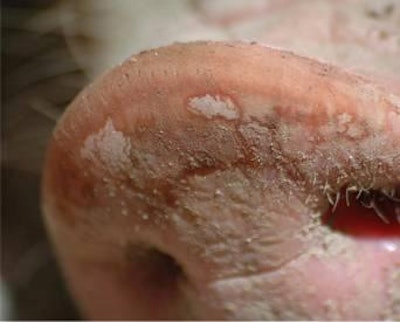
The zoologist Konrad Lorenz (1903-1989) described imprinting as early learning that happens at the moment of birth, when the animal identifies the surrounding environment through its senses and records these first perceptions to learn. The duration of this learning period may vary depending on the species, but it is an irreversible biological learning by which young animals identify themselves with their parents and learn from them through imitation and observation.
Imprinting in feeding
The imprinting (precocious learning) allows to create a preferential effect through the tastes and flavors of the maternal diet. Certain flavors can be transmitted through the amniotic fluid and be perceived by the fetus during fluid intake. As an example, in human studies, babies of mothers that consumed food with anise flavor during the last two weeks of gestation presented a higher preference towards anise flavor than babies that were not exposed to that flavor during gestation.
There are many studies, from more than 40 years ago, that have proved that the prenatal exposure to certain flavors, derived from the maternal diet, modulate the food preferences and neophobias of young animals in several species. Prenatal exposure to a certain flavor creates a preference that can be strengthened if there is continuity in the exposure during the lactation.
It becomes of key importance, then, to choose which flavoring compounds can go through the placenta to the fetus and through the blood stream to the milk, in order to get to the piglet.
The weaning
It is widely known that weaning is a critical time for the pig producer; it is an extreme challenge, because of how fast and prompt it is done in modern intensive swine production. The piglets have to face big challenges during this stage: the separation from the mother, a change of environment, the mixing with animals from different litters and the change of the diet, among other factors. All these produce a big stress in the animal and a neophobia to the feed that results in a low feed intake at the weaning. As piglets are generally weaned much earlier than in natural conditions, a precocious learning can be specially interesting for this species, because the increase in the preference for a certain type of food can help motivate the piglets to consume solid food at weaning, and therefore improve their welfare, reduce the early weight loss and the diarrhea incidence. Besides, the imprinted preference for certain flavoring compounds are long lasting.
Oostindger (Table 1) studied in 2011 the effects of the pre- and post-natal exposure to a flavor on piglet behavior. The piglets were exposed to a flavor through the sow diet during the last stage of the gestation and/or during lactation or none of them. In several of the performed trials, the piglets that were prenatally exposed to the flavor behaved differently compared to the ones that were not exposed. This fact shows the capacity of the piglets to recognize the flavor after the birth. The differences between the groups were more notorious in the trials conducted in relatively high levels of stress, as in some trials, the mere inclusion of the flavor in the feed (in not imprinted animals) already had an effect on the feed intake post weaning (in one trial, even numerically stronger than in the imprinted animals); However, she did see a decrease in the post-weaning diarrhea in the imprinted piglets in that very test.
In 2013, Ortiz determined the effects of the implementation of a combination of aromatic essential oils (EO) in the feeds used during the last third of the gestation, lactation, and later on during the weaning period. He wanted to confirm if the flavor could create an imprinting signal in the weaning pig to facilitate the transition from the liquid (lactation) to solid food, and whether this improved feed intake and weight of piglets after weaning. There were no differences in sows regarding gestation and lactation performance. However, in the post-weaning results, there were significant differences on the feed intake during the first week in imprinted animals compared to the non-imprinted ones. There was another group of non-imprinted animals that received the EO after weaning (NIEO), and these animals presented also a higher feed consumption than the control, but that difference was not significant (NIEO = + 15.23 percent and EO= + 29.40 percent). The results of the growth in the first week had the same trend as the feed intake (NIEO = +39.08 percent and EO= + 52.98 percent). With regards to the weight of the piglets, EO presented a positive difference of +327 g compared to the control NI treatment (Table 2).
Conclusions
It might be safely deducted from the above that inclusion of certain compounds in the diets of sows during gestation and lactation has the potential to improve piglet performance. Nevertheless, certain challenges remain; namely the difficulties regarding the right compounds to be used, and the handling of a different diet during the last weeks of gestation, where not many producers can use a different gestation feed.

















